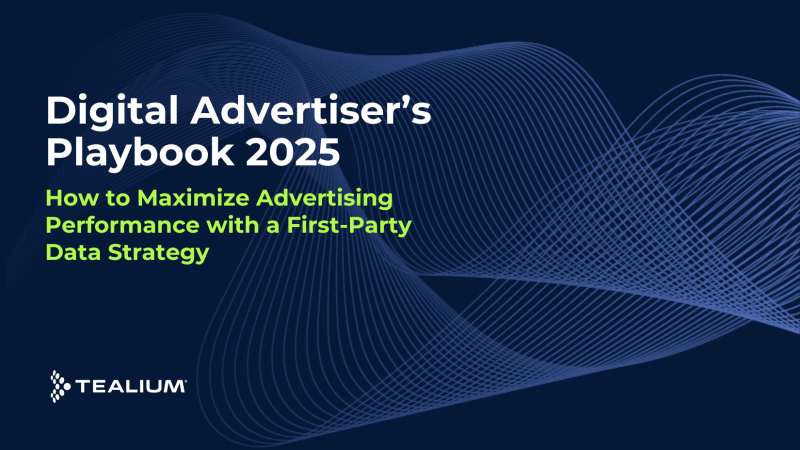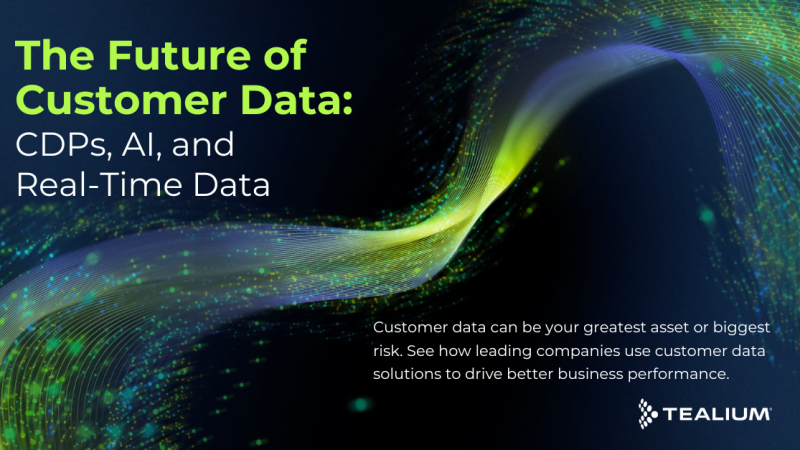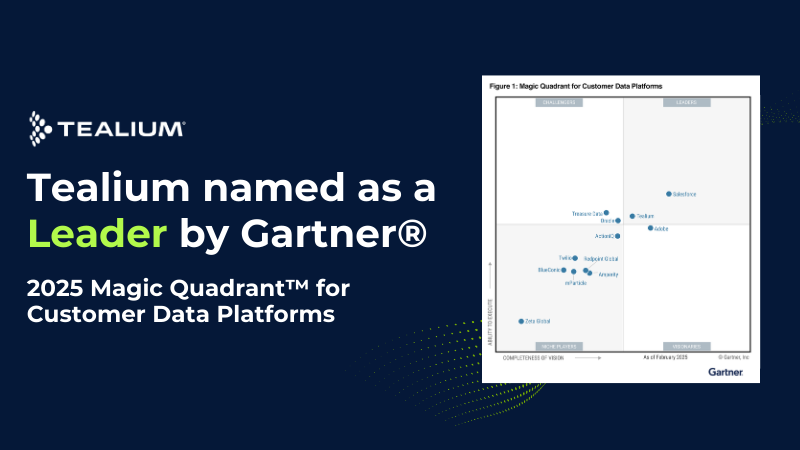Customer Data Hub
A truly universal technology platform collects data from every source and provides flexible options for the distribution of that data across desktop, mobile web, mobile apps, IoT and connected devices. Tealium EventStream, part of Tealium’s Customer Data Hub, is a lightweight data collection and delivery solution to manage all cloud based (server-side) data from one, central hub where anyone can orchestrate the data powering customer experience.

KEY BENEFITS
Data Collection and Delivery
There are important aspects of data collection and delivery that every digital business should evaluate, as the answers will be unique to each brand’s strategy and implementation needs/requirements. While going through this exercise, it is equally important to assess benefit, cost, and potential risk.
What options are available?
Tealium offers customers both client-side delivery through Tealium iQ Tag Management and cloud delivery (server-side) through Tealium EventStream, so you have the power to make the right choice for your data strategy, business needs, and budget.
Client-side Delivery – Tealium iQ Tag Management provides client-side delivery of data through tags, one of the most popular ways to transmit data from web pages. This method is used for collecting and sharing data from your website to your marketing technology vendors and is commonly referred to as tag management.
Cloud Delivery – Cloud delivery is when data from a pixel or tag is sent into an event gateway system, like Tealium EventStream, and then that system relays data to your third-party vendors. This action simplifies the collection and delivery process by sending one data stream to a cloud-based repository, and then the data is sent to your vendors.
In today’s world, both options are crucial.
As more and more vendors allow for cloud delivery, Tealium is rapidly building out this marketplace. With the Tealium Event Data Framework, you can combine the power of Tealium EventStream with Tealium iQ Tag Management for a holistic, end-to-end event data solution that gives you the necessary options to efficiently adapt to evolving technology and customer behavior.
Client-side vs Cloud or Client-side and Cloud?
Options for Website – There are certain client-side tags such as content optimization and recommendation tools that need to run in the browser to personalize experiences, display ads or dynamic content to visitors. Tealium’s client-side tag management solution, Tealium iQ (part of the Customer Data Hub), brings these libraries to the browser at the right time and with the right data.
As an alternative to client-side delivery, Tealium EventStream provides the option to remove vendor tags from your visitor’s browser and instead send the data via server-side APIs. This efficient delivery mechanism streamlines data delivery and reduces reliance on development resources. Tealium offers the Tealium Collect library (SDK) to perform the event tracking of your site visitor’s events (views, clicks, scrolls, etc.). After the event data is collected, it can then be sent server-side to your analytics technology.
Primary Benefits – Tealium can increase the efficiency of web content display by prioritizing client-side tags to execute after the DOM Ready event (or later if desired.) Tealium also provides high-performance client-side data management through Tealium iQ Tag Management as part of the Event Data Framework or the comprehensive Tealium Customer Data Hub.
Options for Mobile Apps, IoT, and Connected Devices
Customers don’t multitask on mobile devices, they single-task, and they expect to get value from a mobile experience in seconds, and any delay in that experience is problematic. Mobile apps need to be fast, stable and use the network as little as possible. At the same time, you need real-time metrics to understand how the apps are used and are performing. With a lightweight client, the vendor-specific logic to record these events can be done server-side. Your mobile app event data can send via the Tealium Collect library (SDK) or direct calls.
Primary Benefits – Cloud delivery via EventStream on mobile apps, IoT and connected devices reduces the load on a device, reduces battery taxation and much more. One of the biggest advantages of cloud delivery in your mobile app is the development and maintenance hours your organization will save by not working with or frequently updating multiple SDK vendors. The Tealium Customer Data Hub also provides a ‘Discovery’ feature that allows users to see the data flow in cloud delivery for validation and troubleshooting needs.
Using Cloud Delivery
Preferred Method- Mobile Apps and IoT
Optional Method- Standard Desktop and Mobile Web
Only Method- Server Driven API Events such as point of sale, call center or batch processes.
Options Beyond Just Event Collection and Cloud Delivery
The options discussed are on the topic of event data collection and delivery. However, because Tealium’s Customer Data Hub provides more than just event data pass-through, you’re likely to send data to Tealium for purposes of leveraging AudienceStream. Tealium AudienceStream is a powerful visitor enrichment and segmentation engine, cross-device visitor stitching service, and real-time action platform.
What’s the Right Solution?
Not every situation warrants, or is capable of, cloud delivery for data collection and delivery. It is important that the vendors you work with are true partners and help determine which scenarios are best served by either method. Tealium works with customers to help evaluate your current data strategy and business needs, and determine how to optimize efficiency and get the most ROI from your martech investments. This type of engagement strengthens the customer-vendor partnership, and the Tealium Customer Data Hub provides options– empowering customers to build the best solution for your needs.
- Should you send data directly to the vendor?
- Do we need/want to reduce the use of JavaScript on our digital properties?
- Should you collect and send data through a data collection point and then to a vendor?
- How will these strategies affect site performance?
- How will they influence the performance of your mobile apps and IoT?
- How will these options impact your customers experience with your brand?







